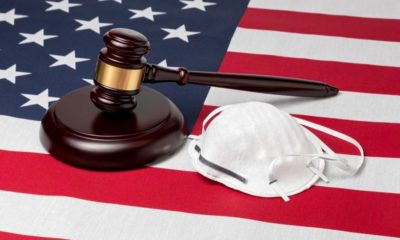Health
Face Masks: CDC Says Cover Up

Since the outbreak, Americans have received mixed messages regarding face masks. Though initially discouraged for asymptomatic people, the government now recommends that everyone cover-up.
The CDC has finally changed its face-covering guidelines for Americans, breaking with the World Health Organization (WHO) on the issue. All Americans are now advised to wear non-medical face covering when in public, regardless of whether they or a loved one are sick. This policy balances between reducing the spread of the disease while controlling demand for medical supplies that hospitals need.
Many countries, especially in Asia, adopted this practice well before the coronavirus outbreak and considered it self-evident that such measures would be necessary during a respiratory pandemic. Why have the US and much of the world taken so long to issue this recommendation? What finally made the CDC change course?
Cultural Differences
The US, like much of the world, has been slow to adopt face masks as a commonplace measure against disease. However, especially in Asian countries, previous experience with dangerous outbreaks of respiratory illness led to a culture of caution.
During the SARS outbreak in 2003, the world saw images of thousands of Asians wearing face masks to protect themselves against the disease. The trend stuck around in countries like Japan, South Korea and China, where wearing face masks in public places remained commonplace in the years that followed. In the wake of the COVID-19 outbreak, this naturally remained the norm. In major cities like Tokyo and Seoul, people in public spaces invariably have masks on.
The same is not true of the United States. In fact, there has been much debate regarding the necessity of wearing a mask in public since the outbreak. The World Health Organization doesn’t recommend covering up either.
As the WHO's website currently states: “For healthy people, wear a mask only if you are taking care of a person with suspected COVID-19 infection.”
The CDC was previously making the same recommendation: If you’re not sick, don’t wear a mask.
Why the Hesitation?
The hesitation to implement face covering guidelines likely boils down to two factors: supply shortages and symbolic significance.
Face masks, particularly N95 masks, are in high demand around the world. The price of the protective equipment has skyrocketed in the face of growing demand. This has prompted Donald Trump to order manufacturer 3M to significantly boost production.
A scarcity of medical-grade protective equipment led countries and health organizations, such as the United States and the WHO, to recommend against the general use of the masks.
Another likely factor is the message that face masks send. There is a symbolic significance to seeing an entire country don protective gear to leave their homes. It creates a sense of fear in a country that hasn’t experienced a serious outbreak of a disease for generations. The president, a master of messaging who initially tried to mitigate public concern over the virus, no doubt understood the psychological impact of the measure.
#Chinese Lawyers Sue #US Over '#coronavirus Cover-up'
2 state-backed Chinese lawyers brought lawsuits against the US Center for Disease Control & Prevention (CDC) & other US departments, alleging that they "covered up" the emergence of coronavirus🤔😲https://t.co/KOwsKyuAEf
— Indo-Pacific News – Geo-Politics & Military News (@IndoPac_Info) March 27, 2020
CDC Changes Recommendation
CDC has now changed its guidelines. However, it is still advising Americans to save medical equipment for the professionals on the front lines of this pandemic. The CDC recommends “wearing cloth face coverings in public settings where other social distancing measures are difficult to maintain (e.g., grocery stores and pharmacies), especially in areas of significant community-based transmission.”
This new recommendation comes after scientific research confirms that coronavirus can be highly contagious even when an infected individual is asymptomatic. Covering the face not only helps protect you from other people but protects others in the event that you’re infected.
The bottom line: it’s time to cover up. If you’re leaving the house, do yourself and your community a favor by covering your face with cloth. Some face covering you can use include cloth masks or even a scarf, if you have them.
Up Next:












